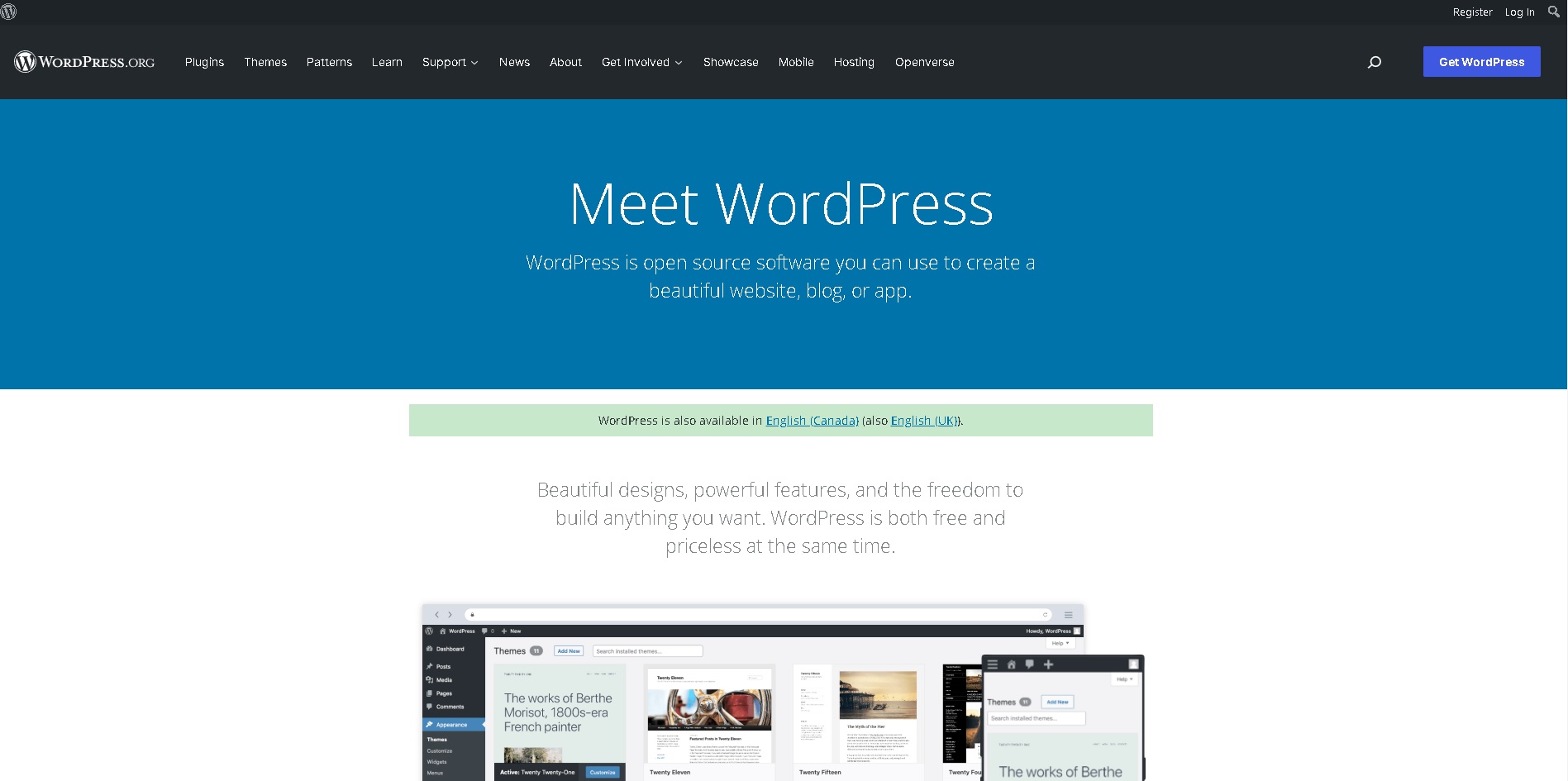Most people think of us as a web company, We have created a number of…
What’s wrong with traditional media?
A discussion of failings of “traditional” media including newspapers, television and radio.
 Opinion, by Mark Ruthenberg G.M. |
It’s not that consumer expectations have risen out of reach of these well-established media, but that the executives have found cost-effective shortcuts for creating and publishing / broadcasting content that have short-changed consumers. With the advent of the Internet, consumers have instead chosen to read, listen and watch online what they want, when they want, and where they want. Advertisers follow consumer trends and activity have reacted to this, carefully moving their ad dollars away from their traditional media (which used to be both effective and safe) into online venues, fundamentally threatening the economics of traditional media.
Quick Links: Newspapers |Television | Radio
Why is traditional media going through such massive adjustments? Its not be cause of the economy, but because of the fundamentals changes in their media over the past several years, now exacerbated by the recession of 2008-2009. Marshall McLuhan had it backwards, its not “the medium is the message” but “the message is the medium”, at least in media consumers’ minds.
The economic forecasts are that 1 in 10 newspapers in the US will shut down, and we’ve already seen newspaper chains, radio stations groups and television networks lay off 20-35% of their staffs. What fundamentals are affecting this? It is only too obvious that they are not drawing enough advertising revenues to cover their costs, which include staff, technology as well as massive corporate debt from recent mergers and acquisitions.
What’s Wrong with Newspapers
Newspapers have been the core medium of news, opinions and advertising in Canadian communities for 100-150 years. They were the only way to reach a broad audience in the days before radio (1920s), television (1950s) and the internet (1990s).
Challenged by TV News Programming

In the 1980s, newspapers reacted to the growing strength of the dinner hour TV news by shifting to a morning publications. That gave their writers to research and write in-depth news stories, and spared them head-to-head competition with TV news with its 30 second sound bytes at dinner hour.
Over the past decade, the newspapers have also been hit by the 24-hour news channels, who can develop in-depth stories and are funded by national or global ad dollars. Morning newspapers now have their news dominance challenged by a medium that was always up-to-the-minute. I remember watching 9-11 unfold before my eyes, captivated by the impossible happening before my eyes…
Poor Readership & Circulation
These factors have led to stagnation of newspaper circulation numbers in all markets. Even in Calgary, which has tripled in population over the past 30 years, the Calgary Sun and Calgary Heraldnewspapers have only nominally increased the number of subscribers. In that city, Canwest’s Calgary Herald is even giving away copies at the city’s Light Rail Transit station.
Many young people do not subscribe to the paper, but instead check key news stories form the newspaper’s website for free.
The newspapers have not been able to monetize their internet presence. They are challenged by the fact their ad sales people are good at selling square inches of paper and not measurable reader visits and page views. And if they were good at that, they’d have trouble ever again selling square inches of paper with no reliable or accureate day-by-day minute-by-minute measurement tools.
Loss of Ad Revenues
The biggest threat of the internet is the growing dominance of online tools for matching consumers with products, a domain previously the monopoly of newspaper classifieds. It started in the 1990s with auto classifieds (some of which got quickly acquired by newspaper chains in Canada), internet auction sites like eBay (which reaches a worldwide audience), and classified listings like Craigslist and Kijiji (both of which are largely free).
Newspapers are also challenged by various online jobs sites like Monster (owned by the company that was the largest careers classified ad agency, that used to earn small commissions on ads they placed with newspapers, and now keep 100% of the revenues used to put newspapers out of business), CareerClick (owned by Canwest), and Workopolis (owned by CTVglobemedia) and JobBoom (integrated with Canoe.ca, owned by Sun media) are trying to level the playing field* [I welcome comments on additional examples of media cross-ownership].
Classified ads previously provided about a third of a newspaper’s total ad revenue, and the loss of that revenue source are threatening the financial viability of many newspapers. In the US, a large chunk of the display advertising came from banks, home builders, and car companies, all now in financial difficulty and under tremendous pressure to reduce costs. In the US, 10% of all newspapers are expected to fail in 2009. In Canada the banking sector is still strong, but home builders and car makers/dealers are similarly challenged.
* FoundLocally offers free jobs postings, free events calendar postings, and free news announcements
What’s Wrong with Television
Where do I start? There are two main things wrong with television: it’s too much infomercials, and there is too much inappropriate programming.
Too Many Infomercials on TV
Many of the cable specialty channels are nothing but infomercials overnight, and often well into the morning. If we are being charged a monthly fee in our cable bill, why can’t these channels give us the programming they promised the CRTC they’d provide. Now, many of us are not watching TV in those hours, because we are either sleeping or going to work, but there are many who are not constrained by a 9 to 5 job, and still pay the same per-channel cable fee as the rest of us.
And that’s not counting all those “entertainment shows. Who’s not totally exhausted by Ben Mulroney on one show (eTalk) shilling his other program(s), including Canadian Idol (mercifully axed for 2009) and So You Think You can Dance Canada, as well as other CTV programs Then there are all the entertainment/movie shows that regurgitate film trailers and do pablum quality interviews with the stars, and the various “stalkerazi” shows like TMZ. The other networks do not get off scot-free either, since Global has Entertainment Tonight and Entertainment Tonight Canada.
Then there are the advertisement shows masquerading as programming (one company creating this type of “content” is Calgary-based Chandran Media Inc, [chandranmedia.com] ) with a reporter shilling for various “hot” or “must have” bars, restaurants, oil companies, vacation paradise condo development investments, pretending to be unbiased stories. Chandran is not only paid for by the featured company (just like many local newspaper’s “Consumers Choice Awards”, incidentally) as well as by the broadcasters who, because the programs are produced in Canada, help them meet the quote of Canadian content.
And all this advertorial programming is on top of the typically 20-plus minutes of commercials shown through a TV watching hour. Give me a break!
Too much Inappropriate Content
Inappropriate content is content that does not makes sense on the channel, and definitely contrary. Can anyone explain why Arts & Entertainment was showing CSI Miami? Or why is the Outdoor Channel showing Dog the Bounty Hunter (he’s chasing crooks around urban Honolulu, right?), and why is The Learning Channel showing so many poly-offspring reality shows like Jon & Kate Plus 8? This distorts the brand message of the channel, and gives picking shows and channels about the same odds as the 6/49. When aren’t station executives thinking like viewers, and why is the CRTC not making stations and channel do what they promised? Or take away broadcast licensed from the ones that aren’t delivering or not economic anyway.
The Rise of YouTube and Online Video
YouTube came out of nowhere and provided a forum for viewing “gonzo” video as well as professionally created and even broadcast quality clips. There is infinite variety on that website, and content is totally searchable. It’s no wonder that most young people today are switching to watching the YouTube videos of their choice. There you can find what you want, when you want. And no ever-present Ben Mulroney.
What’s Wrong with Radio
We used to have the radio on all the time, enjoying listening to new hits and banter by the radio DJs. I think CanCon (Canadian Content regulations) was a good idea… I had bought the first Juno Awards compilation CD set, and did not realize how many songs I had listed to in my youth from the 1960s and 70s were by Canadian bands! They deserve the support of the radio stations.
Of course, sometimes is seems it nothing but Nickelback or Celine Dione (depending on if you are listening to a “rock” or an “adult easy listening” station) just so the station meets their CanCon quota. Incidentally, I regularly listen to stations in Spokane, Washington (first over cable FM and more recently via Internet streaming) and in Germany and both play significant variety of Canadian content, just because our music is that good!
The Impact of “Idol” Worship
Recently, radio programmers have gotten lazy. It seems like most of radio play masquerading as “hits” are songs by Canadian Idol/American Idol winners or losers (they prefer to call themselves runners-up). And of course, their albums are constantly featured in short 10-second ads on CTV, the host network of those two shows. The sheer mass of music programming churned out by the many “stars” (there are almost 20 manufactured “stars” each year, times 7 seasons so far), which overwhelm the attempts by many other talented musicians trying to get their music played.
This has reduced the opportuntiy for other musicians (particularly bands),and many radio stations have given up on “pop” and settled for “oldies” in some variation, either sticking to an era (50s & 60s, 80s & 90s) or a genre of music (classic rock, album rock). But in either case, their listeners have tuned out current musical talent
It’s no wonder that many musicians just go to the Internet to promote and sell their music online, where Social Networking sites accelerate word of mouth and “word of mouse” faster than either Ryan Seacrest or Ben Mulroney can. And with iTunes offering a 30 second sample listen before you buy, and selling songs for about a dollar and letting customers download whole albums for under $10, why go to the local record store.
Of course, this means Canadian music fans are ignoring local radio stations, the record companies, and even the local record stores.
Related Topics:
- Review of Advertising Revenues in Canada since 1999
- Advertising in the Internet Era: Beyond Frequency and Reach
NOTE: all trademarks mentioned are the property of their registered owners



